GARAGE DOOR SPRING REPLACEMENT IN TAMPA AREA
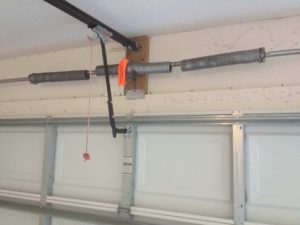
Expert Tips for Reliable Garage Door Spring Repair
When your garage door won’t budge, it’s often due to faulty springs. Responsible for bearing the heavy load and smooth operation of your door, garage door springs are vital but can invite risks when they break. This guide details garage door spring repair, addresses the common signs of failure, and emphasizes the importance of professional expertise while avoiding DIY hazards.
Key Takeaways:
- Garage door springs are under high tension and mishandling can result in serious injury, necessitating regular professional maintenance and repair for safety and performance.
- Signs of garage door spring problems include difficulty with door operation, unusual noises, and visible wear such as rust or stretched springs, which may indicate the need for repair or replacement.
- DIY garage door spring repair is highly discouraged due to the risks of injury and potential for further damage to the door system; professional repair comes with safety, proper tools, techniques, and warranties.
Bayside Garage Door Repair Specialist
Our wide range of Garage Door services include but are not limited to, broken springs, cables, panels, tracks and openers. We also install brand new garage door systems made by the major manufacturers such as CHI Doors, Clopay, Amarr, Genie, Wayne Dalton and many more.
Services We Offer:
- Broken Spring Replacements (torsion and extension)
- Door Off Track / Crooked Door
- Broken Cables
- Worn Rollers
- Panel Replacements
- Hurricane Packages
- Door Maintenance
- *Lifetime Warranties Available
- Keyless Entries
- Lightning Damage
- Broken Belt
- Opener Remote
- Multi-Function Wall Controls
- Update Frequencies
- Safety Sensors
- Gear and Sprocket Replacements
- Circuit Board Replacements
We can help with any garage door or garage door opener related repairs.
We believe in educating the customer before helping them make an informed decision on any repair or maintenance job. When you call, you will get a live voice on the phone, and a knowledgeable one at that. In addition to offering top quality products at unbeatable prices, we maintain the highest level of service for all of our customers.
Here are some of the most common problems with garage doors and openers:
UNDERSTANDING GARAGE DOOR SPRING REPAIR
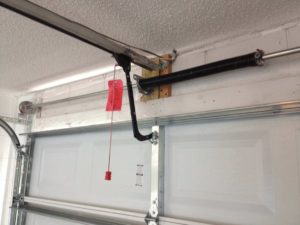
The significance of garage door springs cannot be overstated. These vital components are responsible for lifting and supporting doors that typically weigh between 200 to 400 pounds. Think of them as the muscles of your garage door, flexing and contracting to facilitate movement. But with such weighty responsibility comes a certain level of risk. The energy stored in these springs is substantial and mishandling can result in a sudden release of this energy, akin to a loaded gun going off.
Therefore, regular repair and attentive maintenance of garage door springs are vital for ensuring both the performance and the safety of the entire garage door system.
Types of Garage Door Springs
Just like there are different types of muscles in the human body, there are also different types of garage door springs. The two primary types used in residential and commercial doors are torsion springs and extension springs. Torsion springs, stationed above the closed door, distribute the weight of the door evenly as it opens and closes, providing balance and support.
On the other hand, extension springs, typically installed above the horizontal tracks on both sides of the garage door or directly above the door, stretch and contract to aid in lifting and lowering the door.
Common Garage Door Spring Problems
Like any working component, garage door springs are not immune to wear and tear. Visible rust on springs, gaps in torsion spring coils, and frayed cables are classic indicators of wear and tear. Moreover, if your garage door struggles to maintain its position once opened, or opens very slowly, it may signify problems with spring tension or balance.
A broken spring could be the culprit behind a door that won’t open, crashes down, or is accompanied by a loud noise, potentially leading to accidents. Rust and corrosion not only weaken springs but also necessitate replacement to ensure the safety and proper function of the garage door.
SIGNS YOUR GARAGE DOOR SPRINGS NEED REPAIR or REPLACEMENT
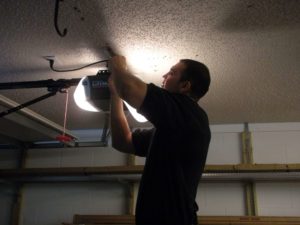
Recognizing the signs of spring malfunction is paramount for the safety and functionality of your garage door. If the garage door opener struggles to raise the door or the door closes too fast, the springs may be failing to properly balance the door’s weight. A crooked opening of the garage door often signals that one of the extension springs is broken, causing uneven lifting.
Additionally, a loud snap from the garage, unrelated to door operation, could indicate a spring has suddenly broken. These signs should warrant a professional inspection and potential spring repair or replacement.
Difficulty in Opening or Closing the Door
Imagine trying to lift a weight that’s too heavy for you. Struggling? That’s your garage door opener when it encounters problems with the garage door springs. Difficulty in opening or closing the door can be symptomatic of underlying issues with the springs.
Springs provide the necessary counterbalance force to facilitate the smooth opening and closing of the garage door. Problems in these mechanics can indicate compromised springs. Appropriate adjustment of torsion spring tension is crucial to remedy difficulties with opening or closing the garage door, aiding in the restoration of proper motion and balance.
Unusual Noises
Your garage door should operate smoothly and quietly. If you’re hearing groaning, popping, or squealing noises during operation, it may signal that the springs are wearing out and experiencing increased strain. Rattling noises during use could suggest that components within the spring system, such as nuts or bolts, are loose and may be causing improper spring function.
Clanking sounds may indicate that garage door springs or coils are rubbing against each other – a common sign of potential spring issues. Even squeaking noises, often remedied by lubrication, can help pinpoint malfunction areas within the spring system due to friction or binding.
Visible Wear and Tear
Visual inspections can reveal a lot about the health of your garage door springs. Here are some signs to look out for:
- Springs that show visible wear, like rusting and fraying
- Springs that stay stretched out and fail to coil back properly after use
- Visible gaps between the coils of a torsion spring
These are all indications of compromised springs, including two springs, that require attention.
Rust on springs compromises their integrity and proper function, signifying a need for professional repair or replacement. Regular inspections of springs for rust or corrosion are essential, as their presence may indicate the need for spring replacement.
THE DANGERS OF DIY GARAGE DOOR SPRING REPAIR
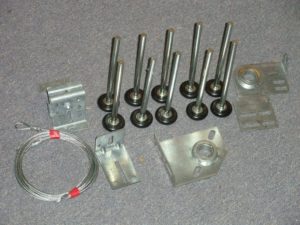
Tempted to fix your garage door springs yourself? Before you don those DIY gloves, it’s crucial to understand the risks involved. DIY garage door spring repair can result in serious injury or even death due to the high tension in the springs and the potential for accidents. The Minnesota Safety Council advises against DIY spring repair because of the extreme danger involved.
The danger in replacing garage door springs is due to the torque in a wound torsion spring or the stretch in an extended extension spring, which, if mishandled, can release energy violently. Using improper tools, such as screwdrivers instead of a proper winding bar, can cause the springs to fly off unexpectedly and lead to injury. In cases where individuals are uncomfortable with balancing torsion springs or dealing with old, rusted springs, calling a professional for assistance is strongly recommended to avoid accidents.
High Tension Springs
High tension springs, like the garage door torsion springs in your garage door, are akin to tightly coiled snakes, ready to strike when provoked. They are under high tension, which is critical for the balance and function of the garage door. This high tension can be hazardous if mishandled during DIY repairs or adjustments involving garage door torsion springs.
If torsion springs snap or are released improperly, the force exerted can result in severe injuries or even fatalities during one spring, emphasizing the importance of prioritizing one’s own safety.
Risk of Injury
The risk of injury during garage door spring repair is not to be taken lightly. Injuries from garage door springs can vary from minor sprains to severe fractures or even life-threatening conditions if doors or springs malfunction during repairs. Severe lacerations, broken bones, and amputations are common injuries resulting from accidents with garage doors, often due to the door falling or finger entrapment. Fatalities, particularly among children, have occurred because of crushing injuries when heavy garage doors fall.
Therefore, the significant risk of injury during DIY garage door spring repair stems from the weight of garage doors and the possible occurrence of accidents involving the door or springs. The National Electronic Injury Surveillance System reported that garage doors were related to approximately 2.03% of emergency visits due to home improvement tool incidents between 1990 and 2007.
Potential for Further Damage
In addition to the risk of personal injury, there’s also the potential for further damage to your garage door system. Using incorrect garage door springs can lead to garage door opener damage, cause doors to open with excessive force, and create safety hazards. Improper installation or adjustment of springs can cause premature failure and potential damage to the entire garage door system. Forcing a garage door to open with incorrect torsion springs can damage the door panels, cause springs to fly loose, or break other components. The use of incompatible springs can lead to the garage door falling off its tracks, risking property destruction and serious bodily harm or fatality.
Inadequate spring functionality can render a garage door inoperable, compromising home security and increasing the risk of burglaries. DIY repair attempts on garage door springs can cause accidents that may result in costly damages to vehicles and other items within the garage. The trial and error involved in DIY repair efforts can lead to extra expenses due to damaged tools, the need for replacement parts, and lost time. Therefore, attempting DIY garage door repairs without adequate knowledge or tools can escalate the damage, leading to more costly and expansive repairs.
Grinding noises may signify chain or belt issues related to spring tension problems, suggesting the potential for further damage. Clunking sounds from the garage door opener struggling due to spring issues can be a precursor to further damage within the garage door system.
HOW PROFESSIONALS HANDLE GARAGE DOOR SPRING REPAIR
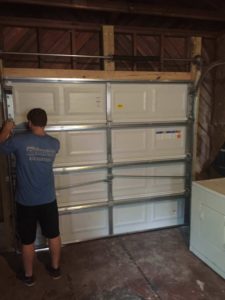
So, how do professionals navigate the complex world of garage door spring repair? They bring to the table expert knowledge, specialized tools, and strict adherence to safety protocols to ensure that your garage door springs are repaired or replaced effectively and safely.
Inspection and Diagnosis
The first step in professional garage door spring repair is a comprehensive inspection and diagnosis. Professional garage door technicians perform a thorough inspection which includes examining:
- The springs
- Tension spring mounting pad
- Alignment
- Rollers
- Hinges
- Bearings
- Cables
- Locks
- Weather stripping
Regular professional inspections can identify early signs of spring issues, aiding in preventing further damage to the garage door system and ensuring proper access.
Testing door balance is a critical part of the inspection, as an unbalanced door can cause undue stress on the motor, indicating a possible need for new springs or adjustments. A thorough inspection includes examining the door’s weight distribution and the following components:
- Door springs
- Cables
- Rollers
- Pulleys
- Other hardware
For signs of wear to ensure the door operates safely. Following the inspection, professionals will provide a detailed estimate outlining the costs for the necessary repairs or to replace the door.
Proper Tools and Techniques
Once an accurate diagnosis has been made, professionals employ the correct tools and techniques to ensure safe and effective garage door spring repair. Specialized winding bars are utilized for the safe adjustment of torsion spring tension, rather than common tools like screwdrivers which can be hazardous. Professionals carefully follow these steps:
- Release the tension from the unbroken spring first.
- Proceed with unwinding and replacing the broken spring.
- Properly wind the new spring with precise turns.
By following these steps and ensuring the proper use of set screws, professionals can ensure a safe and effective garage door spring repair.
After the new spring is in place, a comprehensive process is carried out to ensure the door operates safely and effectively. This process includes:
- Safety inspection
- Component replacement
- Tension adjustment
- Testing for balance and alignment
Warranty and Peace of Mind
Finally, a significant advantage of professional repair is the warranty. Professional repairs often come with warranties, providing coverage for parts and labor, and can safeguard against the potential invalidation of insurance claims in the event of damage. Garage door spring repair typically includes limited-time warranties covering both the spring part and installation labor, with basic spring warranties ranging from 90 days to five years and labor warranties from 30 days to one year. The quality of the garage door spring can impact the length and terms of the warranty, as higher-quality springs may come with more extended warranty periods without additional charges.
Homeowners may encounter different warranty options between garage door companies, which can influence the decision on the quality of the replacement spring in relation to the repair cost. Therefore, spending money on a higher-quality replacement spring may be more cost-effective in the long run than paying extra for an extended warranty if the spring has a high cycle rating and comes with a substantial parts warranty.
Maintenance Tips for Garage Door Springs
Maintaining your garage door springs is just as vital as repairing or replacing them when needed. Regular maintenance can extend the life of these crucial components and prevent potential problems before they escalate.
Here are a few tips to help you keep your garage door springs in top condition.
Regular Inspection
Regular inspections are crucial to ensuring the longevity and safety of your garage door springs. Seasonal maintenance and scheduled professional inspections every quarter can greatly extend the lifespan of garage door springs and avert hazardous failures. Especially during wet seasons, inspecting garage door springs is important for the early detection of rust and to avoid spring corrosion.
Lubrication
Lubrication is another key aspect of maintenance. Regularly applying a light coating of white lithium grease or silicone spray on garage door springs can prevent rust accumulation and ensure smooth operation. It’s essential to avoid common degreaser products like WD-40 when lubricating springs, as they can strip away necessary lubrication and lead to premature spring failure. The correct kind of lubricant, such as white lithium grease or silicone-based sprays, prevents unnecessary friction that can cause early wear or breakage of garage door springs.
To preserve the functionality and extend the life of garage door springs, it’s recommended to lubricate them 1-2 times per year. If surface rust is present on the springs, it can be cleaned off using WD-40 or a solvent, followed by a thorough scrubbing with a wire brush, before reapplying lubricant.
Balancing the Door
Last but not least, balancing the door is an essential aspect of maintenance. Tension must be carefully balanced on both sides of the garage door to ensure smooth operation and prevent safety risks. A well-balanced garage door should:
- Not be wound too tight or too loose
- Have secure tracks
- Have smooth door movement
- Open and close with ease
- Stay in place when opened halfway, without requiring additional support.
To check balance, observe the door as it opens and closes to detect hesitant movement or straining in the opener motor. Manually moving the door to the half-open position after disconnecting the emergency release will show if the door is balanced; it should remain stationary.
Summary
In conclusion, garage door springs may be small components, but their role in the smooth operation of your garage door is monumental. Regular maintenance, professional inspections, and timely repairs or replacements are all essential to ensuring the longevity and safety of these crucial components. The potential dangers of DIY repair underscore the importance of seeking professional assistance when dealing with garage door spring issues. A well-maintained garage door spring not only ensures a smoothly operating garage door but also contributes to the safety of your household.
Frequently Asked Questions:
Can I replace garage door spring myself?
It’s highly dangerous to replace garage door springs yourself, as it requires a high level of safety awareness and specialized tools and resources. It’s recommended to hire a professional for this task.
Can you open a garage door with a broken spring?
It’s not recommended to open a garage door with a broken spring. If you must open the door, be sure to follow safety tips to protect yourself.
What are the main types of garage door springs?
The main types of garage door springs are torsion springs and extension springs, which are used for counterbalancing the weight of the door.
Why is DIY garage door spring repair dangerous?
DIY garage door spring repair is dangerous because it can result in severe injuries or fatalities and may also cause further damage to the garage door system. Be sure to consult a professional for any repairs.
What are some maintenance tips for garage door springs?
Regular inspections, lubrication, and balancing the door are essential maintenance practices for garage door springs, ensuring their proper function and longevity.


